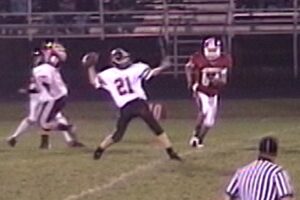Trap #1: What do you have for me today?
See Last Week’s blog post for more on how to handle this situation
Trap #2: What’s Your Price?
Other potential versions of this are: “How much is this going to cost me?” or “I can’t afford that!” or for my grain buying friends, “What’s your basis?”
This is probably the single most common trap we run into. To be clear, this article is not about the actual price resistance issue. I will deal with that in future blogs. However, this post is about what to do when this question gets posed too early in the process -The trap so to speak. Also, please know that I am not insinuating any intentional or devious plot by your customer. I know it sounds bad to call it a trap, but that’s what it becomes if you take the bait and go blindly down that path.
Why does a customer pose that question? Some good advice from Simon Sinek – always understand the Why. This helps us in directing the sales call after the question is lobbed out there.
- They don’t know anything else to say. In their mind, they have categorized you into a product or service category, like crop insurance or the feed guy or simply a vendor of fertilizer or the seller of tractors. They know or see a lot of sales people just like yourself in a week, month, year. They simply don’t know any other way to differentiate you from the crowded market. So, they ask the “fish or cut bait” style question – “What’s your price?”
- They are intimidated. There is a large population of people that are intimidated by the entire sales process. Having a sales person call on them makes them uncomfortable. If they are walking into your retail location, the intimidation level just increased as they are not on their home turf. They are on yours. They pose the question “What’s your basis or what’s your price?” as a way to level the playing field in their mind.
- They might actually be in a hurry. In some cases, the customer is truly in a hurry and just wants to know your price so they can consider your products.
- It’s their #1 trump card. They play this card to let you know they want to negotiate the price. They may want to express that all the other things you are about to tell them aren’t important. They simply want the lowest price.
- They are ready to buy. The single best reason could be that they are ready to buy and just need to know the final price. With smart phones and excellent web sites, most buyers are well aware of our products or services before we arrive at their farm or in their business. Ag is certainly not a brand-new business and many of our customers are well aware of you or your company. So, they might be ready to buy.
How do we handle the challenge?
As with last week’s challenge and advice, I never recommend avoiding the question. Out of respect for the customer, you need to address the question. Deciding to answer it with a number is up to you. Either way, you have a risk in the situation. If you answer with a number, you run the risk of a shortened sales process or risk that the customer won’t think of anything else after you give them the price. If you don’t answer with a number, you risk the customer thinking you are avoiding the question and have something to hide with your price.
Here’s a few options to reply to this situation. It’s certainly not all inclusive and I welcome any feedback on ways you might handle the challenge.
– “It depends on several choices you have with this product.” The reason I like this is that first, there’s almost always multiple levels of any product or service. Secondly, it tells the customer that it’s their choice as to what the price will be. It should make most customers ask, “Well, what are my choices?” This is where you need to quickly differentiate in order to show the benefit of what you are selling. This is the moment where you want to bring out the reason you or your products are different and a better fit for this customer. Show them the different choices.
– “I can give you a price but you have to try it out. You are really going to like this feature or this benefit.” I like this because you are answering the question by telling them you will actually give them a price. However, you pique their interest by telling them something unique about your product. This works really well when you have a product that Demo’s well. If your product has some special feature or benefit that is better understood by actually trying it out, then this technique is very effective. Let me be so bold as to say that every product Demo’s better than verbal or written explanation. If you are not putting some form of your product in a customer’s hands to show them, I think you need to change that today.
– “Well, I wish it was as easy as a single number. Let me show you how you arrive at your final price” or “It takes a little bit of information to arrive at that number. Let me show you how that’s done.” I like this reply as it once again tells the customer that the price is in their hands. By using the words “you” in the reply, it lets them know they are in control. This reply works when there are a lot of options or features that can be added to a product or service. It also works well when there is tiered pricing. The Good-Better-Best tiered system or the Cadillac-Chevy-AMC pricing levels that most products come in. For those not familiar with AMC, it was a very inexpensive line of cars from the 70’s. Google “Pacer” or “Gremlin” to find out why.
Reshape these Traps into Opportunities to differentiate yourself.
It might be today or tomorrow or next week, but I assure you, one of these two scenarios will play out on your sales call. Let’s be prepared for a better way to handle them the next time they do.



